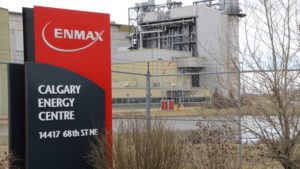
Electricity rates are set to jump significantly in April for Albertans, but the spike will only be reflected on some customers’ bills.
Electricity costs are set to jump by nearly 50 per cent between March and April for customers of Enmax Energy, Direct Energy and Epcor Energy, according to rates set by the Alberta Utilities Commission.
Enmax’s residential electricity rate will be jumping from 5.11 cents per kilowatt-hour in March to 9.28 cents in April.
The last time the utility company saw prices that high for residential customers was in May 2014.
“This has been coming. Power prices that feed into these regulated rates are based on trades in the forward market. So if you’ve been paying attention to that, which I know most people would not, you’ve been able to see this coming since at least January, if not December of last year,” said Matt Ayres, an executive fellow with the School of Public Policy at the University of Calgary.
Many customers won’t see the impact of the hike, thanks to the government’s regulated rate option cap, which is set at 6.8 cents.
RRO cap will lessen the blow
Customers on fixed-rate plans, or plans with floating rates that follow the regulated rate option with the cap, wouldn’t see their bills increase past the cap, said Blake Shaffer, a PhD candidate in economics at the University of Calgary, and the former director of trading at TransAlta.
“If prices rise above 6.8 cents then you’re on what’s called the RRO rate, which is a floating month-to-month rate which about half of Albertans are on. The difference though is going to have to be made up by the government,” he said.
The cap was set by the provincial government in June 2017, but April will be the first time rates have been high enough for it to kick in.
Prices have only jumped higher than 6.8 cents a handful of times in recent years before the cap was enacted, but pre-2014, rates regularly exceeded 10 cents.
The money to protect Albertans from the price swings comes from the carbon levy. It will be in place until 2021, when the province’s capacity market is set to be fully operational, which the province enacted in hopes of bringing more revenue certainty to the market for generators and consumers alike.
“It definitely means that there will be money coming from the government to make up the difference between the capped prices and the approved regulated prices,” Ayres said.
But customers paying variable rates, like those on Enmax’s floating index electricity plan, would be impacted by volatility in the province’s electricity market.
The utility company sent out an email warning customers about the potential for surprises on their bills and giving them a chance to review their options.
An Enmax spokesperson said only a small percentage of customers would be impacted.
Ayres said the price volatility is a good reminder for customers to ensure they understand what they are paying on their energy bills.
“If you’re not sure, you grab a copy of your bill, you can call the provider and you just want to work out, ‘Well, what kind of terms and conditions have I signed up for?'” he said. “In my experience most people don’t actually know what rate they’re paying or what the terms of conditions actually are.
“You have to think about what’s your tolerance for prices changing again in the future. As best I can guess at the moment, prices for May will be lower than the cap. Not much lower than the cap. Prices in June and July look like they’ll be higher again.”
Doubled rate doesn’t mean bill will double
He said it’s important for customers to understand that the electricity rate is only reflected on part of their total bill, and if the price of electricity is set to double it doesn’t necessarily mean their bill will double.
As for why the prices are increasing, it’s something that was predicted in a January yearly report by energy consultants EDC Associates.
The firm cited subdued demand, a weak economy and power purchase agreements returned to the province’s Balancing Pool for the collapsed prices leading up to this year. They also predicted that an increase in natural gas prices, growing demand coming out of the recession and the increased carbon tax for the predicted spike.
In 2016 at the height of the recession, prices hit a 20-year low.
The 30-day average pool price for electricity in Alberta was $31.35 as of March 1, 2018, up from $17.34 on the same day in 2016.


